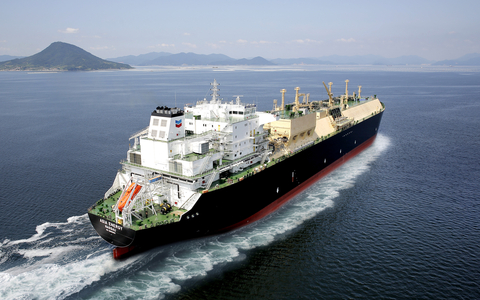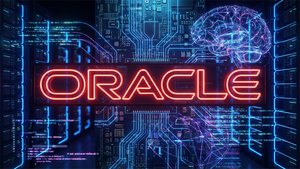Chevron Corporation (NYSE: CVX), through its subsidiary Chevron Shipping Company LLC, announced entrance into an agreement with Sembcorp Marine Repairs & Upgrades Pte. Ltd, a wholly owned subsidiary of Sembcorp Marine Ltd. (Sembcorp Marine), intending to reduce the carbon intensity of their LNG fleet operations. Under the agreement, with Sembcorp Marine’s support, Chevron will install new technologies aboard Chevron vessels to support their energy transition goals. The changes are also in alignment with decarbonization targets set by the International Maritime Organization (IMO).
This press release features multimedia. View the full release here: https://www.businesswire.com/news/home/20230226005105/en/

Photo Courtesy: Chevron Shipping Company LLC
Chevron aims to lower the carbon footprint of LNG transportation by installing new technologies such as a reliquefication system, hull air lubrication, and a new gas compressor. Together, these changes are expected to reduce cargo boil-off, lower fuel consumption and increase volumes of cargo delivered.
“We are excited to work with Sembcorp Marine to help us advance our lower carbon goals,” said Mr. Mark Ross, President of Chevron Shipping Company. “We believe LNG will be a key component of the global energy transition for years to come, and Chevron is focused on continuing its disciplined capital investment in our LNG fleet.”
Sembcorp Marine has significant expertise in complex LNG fleet modifications and has a proven track record for lower carbon solutions for the maritime industry. Sembcorp Marine will provide Chevron with engineering, procurement, installation, and commissioning (EPIC) services and expects to complete the work by mid-2025.
Mr. Wong Weng Sun, Sembcorp Marine President and CEO, said: “Sembcorp Marine is committed to advancing environmental sustainability through the development of industry-leading solutions. Working with Chevron on its LNG fleet upgrades is an immediate way to accelerate the lowering of the carbon footprint in the maritime industry, to achieve the IMO’s target to reduce emissions from international shipping by at least half by 2050, compared to the levels in 2008.”
About Chevron
Chevron (NYSE: CVX) is one of the world’s leading integrated energy companies. We believe affordable, reliable, and ever-cleaner energy is essential to achieving a more prosperous and sustainable world. Chevron produces crude oil and natural gas; manufactures transportation fuels, lubricants, petrochemicals and additives; and develops technologies that enhance our business and the industry. We are focused on lowering the carbon intensity in our operations and growing lower carbon businesses along with our traditional business lines. More information about Chevron is available at www.chevron.com.
About Sembcorp Marine
Sembcorp Marine Ltd provides innovative engineering solutions to the global offshore, marine and energy industries. Headquartered in Singapore, the Group has close to 60 years of track record in the design and construction of rigs, floaters, offshore platforms and specialised vessels, as well as in the repair, upgrading and conversion of different ship types. Sembcorp Marine’s solutions focus on the following areas: Renewables, Process, Gas, Ocean Living and Advanced Drilling Rigs.
Sembcorp Marine’s customers include major energy companies, owners of floating production units, shipping companies and cruise and ferry operators. They are supported by four commercial units: Rigs & Floaters; Repairs & Upgrades; Offshore Platforms and Specialised Shipbuilding.
Sembcorp Marine operates shipyards and other facilities in Singapore, Indonesia, the United Kingdom, Norway and Brazil.
Discover more at www.sembmarine.com.
CAUTIONARY STATEMENTS RELEVANT TO FORWARD-LOOKING INFORMATION FOR THE PURPOSE OF “SAFE HARBOR” PROVISIONS OF THE PRIVATE SECURITIES LITIGATION REFORM ACT OF 1995
This news release contains forward-looking statements relating to Chevron’s operations and energy transition plans that are based on management's current expectations, estimates and projections about the petroleum, chemicals and other energy-related industries. Words or phrases such as “anticipates,” “expects,” “intends,” “plans,” “targets,” “advances,” “commits,” “drives,” “aims,” “forecasts,” “projects,” “believes,” “approaches,” “seeks,” “schedules,” “estimates,” “positions,” “pursues,” “may,” “can,” “could,” “should,” “will,” “budgets,” “outlook,” “trends,” “guidance,” “focus,” “on track,” “goals,” “objectives,” “strategies,” “opportunities,” “poised,” “potential,” “ambitions,” “aspires” and similar expressions are intended to identify such forward-looking statements. These statements are not guarantees of future performance and are subject to certain risks, uncertainties and other factors, many of which are beyond the company’s control and are difficult to predict. Therefore, actual outcomes and results may differ materially from what is expressed or forecasted in such forward-looking statements. The reader should not place undue reliance on these forward-looking statements, which speak only as of the date of this news release. Unless legally required, Chevron undertakes no obligation to update publicly any forward-looking statements, whether as a result of new information, future events or otherwise.
Among the important factors that could cause actual results to differ materially from those in the forward-looking statements are: changing crude oil and natural gas prices and demand for the company’s products, and production curtailments due to market conditions; crude oil production quotas or other actions that might be imposed by the Organization of Petroleum Exporting Countries and other producing countries; technological advancements; changes to government policies in the countries in which the company operates; public health crises, such as pandemics (including coronavirus (COVID-19)) and epidemics, and any related government policies and actions; disruptions in the company’s global supply chain, including supply chain constraints and escalation of the cost of goods and services; changing economic, regulatory and political environments in the various countries in which the company operates; general domestic and international economic, market and political conditions, including the military conflict between Russia and Ukraine and the global response to such conflict; changing refining, marketing and chemicals margins; actions of competitors or regulators; timing of exploration expenses; timing of crude oil liftings; the competitiveness of alternate-energy sources or product substitutes; development of large carbon capture and offset markets; the results of operations and financial condition of the company’s suppliers, vendors, partners and equity affiliates, particularly during the COVID-19 pandemic; the inability or failure of the company’s joint-venture partners to fund their share of operations and development activities; the potential failure to achieve expected net production from existing and future crude oil and natural gas development projects; potential delays in the development, construction or start-up of planned projects; the potential disruption or interruption of the company’s operations due to war, accidents, political events, civil unrest, severe weather, cyber threats, terrorist acts, or other natural or human causes beyond the company’s control; the potential liability for remedial actions or assessments under existing or future environmental regulations and litigation; significant operational, investment or product changes undertaken or required by existing or future environmental statutes and regulations, including international agreements and national or regional legislation and regulatory measures to limit or reduce greenhouse gas emissions; the potential liability resulting from pending or future litigation; the company’s future acquisitions or dispositions of assets or shares or the delay or failure of such transactions to close based on required closing conditions; the potential for gains and losses from asset dispositions or impairments; government mandated sales, divestitures, recapitalizations, taxes and tax audits, tariffs, sanctions, changes in fiscal terms or restrictions on scope of company operations; foreign currency movements compared with the U.S. dollar; higher inflation and related impacts; material reductions in corporate liquidity and access to debt markets; the receipt of required Board authorizations to implement capital allocation strategies, including future stock repurchase programs and dividend payments; the effects of changed accounting rules under generally accepted accounting principles promulgated by rule-setting bodies; the company’s ability to identify and mitigate the risks and hazards inherent in operating in the global energy industry; and the factors set forth under the heading “Risk Factors” on pages 20 through 26 of the company’s 2022 Annual Report on Form 10-K and in subsequent filings with the U.S. Securities and Exchange Commission. Other unpredictable or unknown factors not discussed in this news release could also have material adverse effects on forward-looking statements.
View source version on businesswire.com: https://www.businesswire.com/news/home/20230226005105/en/
Contacts
Media:
Chevron:
Christine Dobbyn
christinedobbyn@chevron.com
Sembcorp Marine:
Ms Chua Mun Yuen
Head, Investor Relations and Corporate Communications
Tel No: +65 6971 7039
Email: munyuen.chua@sembmarine.com
Ms Serene Lam
Manager, Investor Relations and Corporate Communications
Tel No: +65 6971 7043
Email: serene.lam@sembmarine.com





